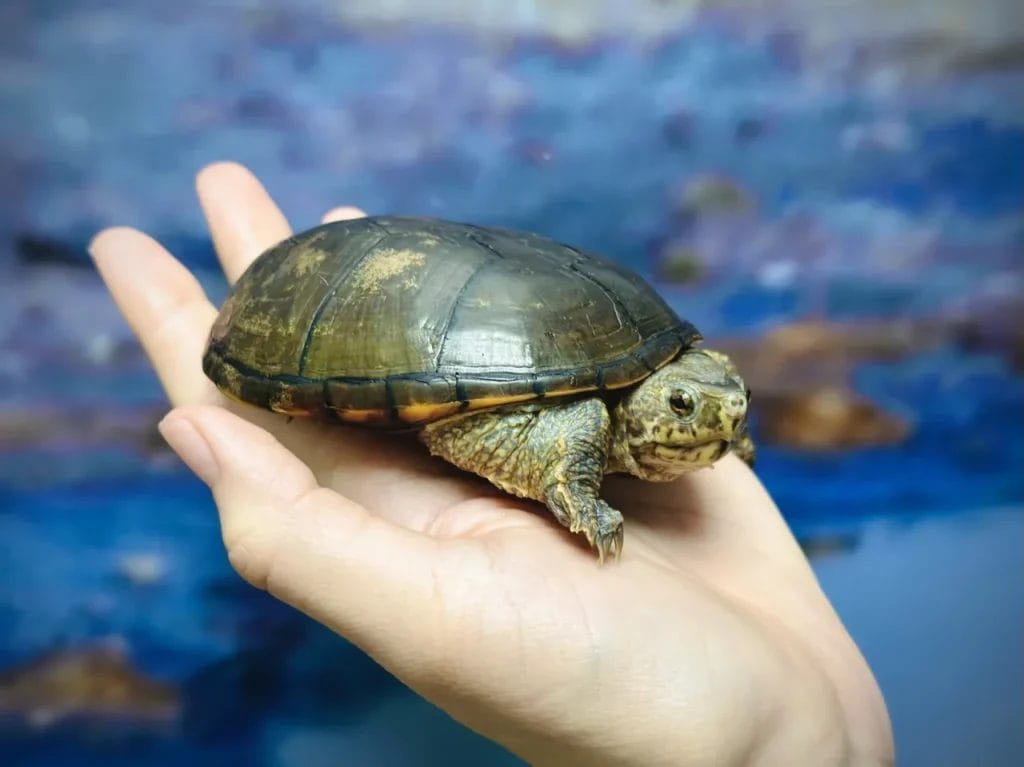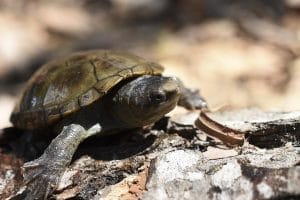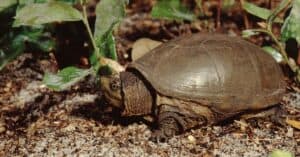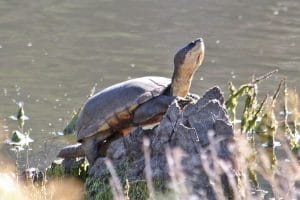Kinosternon cora (Cora Mud Turtle)
Home > Turtle Database > Kinosternon cora (Cora Mud Turtle)

The Cora Mud Turtle is a small freshwater turtle species native to Mexico, known for its adaptability to various aquatic habitats. Its secretive nature and fascinating life cycle make it an interesting subject for researchers and enthusiasts.
Native Turtle Species Map – Find Turtles by Region
Scientific Classification
- Kingdom: Animalia
- Phylum: Chordata
- Class: Reptilia
- Order: Testudines
- Family: Kinosternidae
- Genus: Kinosternon
- Species: Kinosternon cora
Common Names
- Cora Mud Turtle
- Cora Turtle
This Hilarious Turtle Book Might Know Your Pet Better Than You Do
Let’s be real—most turtle care guides feel like reading a textbook written by a sleep-deprived zookeeper.
This one’s not that.
Told from the snarky point of view of a grumpy, judgmental turtle, 21 Turtle Truths You’ll Never Read in a Care Guide is packed with sarcasm, sass, and surprisingly useful insights.
And hey—you don’t have to commit to the whole thing just yet.
Grab 2 free truths from the ebook and get a taste of what your turtle really thinks about your setup, your food choices, and that weird plastic palm tree.
It’s funny, it’s honest, and if you’ve ever owned a turtle who glares at you like you’re the problem—you’ll feel seen.
Identification
Description
The Cora Mud Turtle has a small, elongated carapace that ranges in color from olive green to dark brown, often with subtle patterns. Its plastron is hinged, allowing it to close its shell partially for protection. The skin is typically grayish-brown with yellowish markings on the face and neck.
Sexual Dimorphism
Males are slightly smaller than females but have longer tails and a more concave plastron. Females have shorter tails and a flatter plastron, adapted for carrying eggs.
Check more turtles from the Kinosternon genus
Native Origin and Distribution
Geographical Range
This species is endemic to western Mexico, primarily found in the states of Nayarit and Jalisco. It inhabits lowland freshwater ecosystems within this region.
Preferred Habitat
The Cora Mud Turtle thrives in shallow ponds, slow-moving rivers, marshes, and wetlands. It prefers environments with soft, muddy substrates and abundant vegetation.
Behavior
Feeding Habits
The turtle is omnivorous, feeding on aquatic plants, insects, small invertebrates, and carrion. It actively forages during dawn and dusk.
Predators
Natural predators include birds, larger reptiles, and mammals. Its hinged shell offers some defense against these threats.
Reproduction
Breeding Season
Mating typically occurs during the rainy season, from June to August, when aquatic habitats are most suitable.
Reproductive Method
Females lay small clutches of 2–6 eggs in nests dug in sandy or muddy soil. The eggs incubate for 3–4 months before hatching.
Conservation
Extinction Status
The IUCN currently classifies the Cora Mud Turtle as Near Threatened.
Threats
Habitat loss due to agricultural expansion, water pollution, and climate change are significant threats. Overharvesting for the pet trade also poses risks.
Conservation Measures
Efforts include habitat protection, sustainable land use practices, and stricter regulations on trade.
Economic Importance
The Cora Mud Turtle has minimal direct economic importance but contributes to ecosystem health by controlling insect populations and scavenging organic material.
Interesting Facts
- The Cora Mud Turtle can survive dry periods by burrowing into the mud and entering a state of dormancy.
- It is among the few turtles with a hinged plastron, allowing better protection against predators.
- This species is often sought by hobbyists for its manageable size and unique appearance.

About Author
Muntaseer Rahman started keeping pet turtles back in 2013. He also owns the largest Turtle & Tortoise Facebook community in Bangladesh. These days he is mostly active on Facebook.














